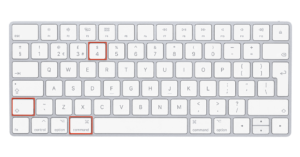
In today’s fast-paced world, technology has transformed nearly every aspect of our lives—including health and wellness. Digital wellness platforms are at the forefront of this revolution, offering individuals innovative ways to track, manage, and improve their well-being. From fitness apps and telehealth services to AI-driven mental health support, these platforms are reshaping how we approach health care and self-care.
1. What Are Digital Wellness Platforms?
Digital wellness platforms encompass various applications, services, and tools designed to promote physical, mental, and emotional well-being. These platforms leverage technologies like artificial intelligence, big data, and wearable devices to provide personalized health insights and recommendations.
Types of Digital Wellness Platforms
- Fitness & Nutrition Apps: MyFitnessPal, Fitbit, and Noom help users track exercise, diet, and calorie intake.
- Telemedicine Services: Platforms like Teladoc and Amwell connect patients with doctors remotely, enhancing healthcare accessibility.
- Mental Health Apps: Calm, Headspace, and Woebot offer meditation, stress management, and AI-driven therapy.
- Wearable Technology: Smartwatches and fitness bands monitor heart rate, sleep patterns, and activity levels.
2. The Driving Forces Behind the Digital Wellness Boom
Several factors contribute to the rapid rise of digital wellness platforms:
Increased Health Awareness
People are becoming more proactive about their health, seeking tools to monitor and improve their well-being.
Technological Advancements
AI, machine learning, and IoT (Internet of Things) have made personalized health tracking more accurate and accessible.
Demand for Remote Healthcare
The COVID-19 pandemic accelerated the adoption of telehealth and remote monitoring solutions.
Workplace Wellness Initiatives
Companies are investing in digital wellness programs to enhance employee productivity and mental health.
3. Benefits of Digital Wellness Platforms
Accessibility and Convenience
Users can access healthcare and wellness services anytime, anywhere, without the need for in-person visits.
Personalized Health Insights
AI-powered platforms analyze user data to provide tailored health recommendations and predictive insights.
Improved Mental Well-Being
Apps focused on meditation, stress reduction, and therapy support users in managing anxiety and depression.
Cost-Effective Healthcare Solutions
Remote health services reduce medical costs and make professional care more affordable.
4. Challenges and Ethical Considerations
Despite their benefits, digital wellness platforms face several challenges:
Data Privacy Concerns
Personal health data security and privacy remain critical issues as companies collect vast amounts of sensitive information.
Digital Divide
Not everyone has access to smartphones, internet connectivity, or digital literacy, limiting the reach of these platforms.
Over-Reliance on Technology
While helpful, digital tools should complement—not replace—traditional healthcare and human interactions.
5. Future of Digital Wellness Platforms
AI-Driven Health Predictions
Advanced AI will provide more accurate predictions for diseases and personalized wellness recommendations.
Integration with Wearable Tech
Wearables will evolve to provide even more detailed real-time health insights and early disease detection.
Blockchain for Data Security
Blockchain technology could enhance the security and transparency of health data management.
Holistic Wellness Ecosystems
Future platforms will integrate fitness, nutrition, mental health, and medical care into unified digital wellness solutions.
Conclusion
Digital wellness platforms represent the intersection of health and technology, providing individuals with accessible, personalized, and innovative ways to improve their well-being. As these platforms continue to evolve, they will play an increasingly vital role in shaping the future of healthcare, making wellness more data-driven, inclusive, and efficient.





